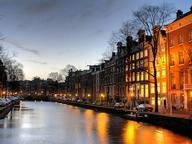Quiz Answer Key and Fun Facts
1. One of the reasons for the Dutch Revolt, although not necessarily the primary and only reason, was because of a small Protestant minority in the Netherlands. Which Protestant's doctrines did they follow?
2. As Philip II decided he couldn't control both Spain and the Netherlands, he appointed a governer to run the various regions instead. Whom did he appoint as the governor?
3. In 1566, an event took place in the United Provinces that some historians believe triggered the revolt. Which event was this?
4. Philip sent the Duke of Alva as governor in 1567. However, this also proved to be a big mistake, destroying any remaining hopes of reconciliation. Which of these events made Alva hated throughout the Netherlands?
5. As the Duke of Alva started to impose his authority on the Netherlands, William of Orange went into exile to avoid the same fate that had befallen Egmont and Hoorn. Where did William go into hiding?
6. During the Dutch uprising between 1568-1571, Spain was also fighting another war that drained its resources, which hampered their efforts against the Dutch. Who else were the Spaniards fighting against?
7. The rebels were given a major boost by the 'Sea Beggars' in 1572, who captured Brielle. But who were the 'Sea Beggars'?
8. In 1576, an event called the Spanish Fury saw many people from the Low Countries take up the rebel cause. Which city did the rebels loot and pillage that saw 8,000 people allegedly killed?
9. After the death of Requesens in 1576, who was named as Governor?
10. Which treaty did the Duke of Parma negotiate in 1579 to ensure the loyalty of some of the southern states, resulting in a split with the United Provinces?
11. After the appointment of the Duke of Parma as governor, the Netherlands started to fight the Spanish army. Which foreign Duke was appointed by Orange to continue the struggle for the rebels?
12. Which event of 1584 signalled a low point in the rebels cause for independence?
13. In 1588, the Spanish declared war on another country. The result was a defeat that also hampered their fight in the Netherlands. Who did Spain declare war against?
14. Now under the leadership of Maurice of Nassau, the rebel forces managed to make their way down south, liberating many towns from Spanish rule. Which of these towns was NOT liberated and stayed part of the Spanish Empire?
15. The first stage of the Dutch Revolt ended in 1609. How long was the truce that took place before the fighting started again?
Source: Author
mick_is_god
This quiz was reviewed by FunTrivia editor
bloomsby before going online.
Any errors found in FunTrivia content are routinely corrected through our feedback system.

